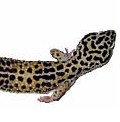If you decide to purchase an exotic animal as a pet, you should be ready to face the fact that part of the package deal of deciding on an exotic pet as a domestic companion is the fact that you have to deal with their obscurity and uniqueness. Owning an exotic pet is not about having a new puppy or kitten in the household. Taking care of these lizards are far more complicated. Solutions to their common problems are not readily available in retail pet stores. The chances of you finding a neighbor who also owns a leopard gecko are pretty small. This is why we articles such as this are written for the community of lizard lovers for them to be able to find common ground.
One of the most common problems that new leopard gecko owner is their encounter with a fallen tail of a leopard gecko. Lost tail among these lizards is common. The common scenario is new owners handle their newly acquired lizard carelessly and suddenly, the tail falls off. This happens when your gecko is under stressed usually by handling them inappropriately. A lost tail is also common when a leopard gecko is joined in the same hide f a dominant leopard gecko. Hides for your leopard gecko are also one thing that you should take into consideration in raising this type of pet.
A fallen tail may appear to be a huge dilemma, but I assure you that a lost tail in leopard gecko is not a big deal after all. This is all part of your pet's caudal autonomy which allows your lizard to break off its own limbs as a form of defense mechanism when it feels threatened. The explanation of this occurrence in the wild is this-- when a predator chases a leopard gecko and manages to snag a part of it, this part is detached at will. The part of the leopard gecko that was detached, usually the tail, continues to move for quite some time even though it is already detached from the body. This mechanism will distract the predator, and hence gives the gecko a chance to escape and hide.
A detached tail doesn't really pose a threat to your leopard gecko, and this shouldn't be a cause of alarm. However, there are some things that you will need to do to help your gecko cope with this process, considering that the tail is where the gecko stores its fat.
Conversely, the lack of a tail does have an adverse effect on the leopard gecko. Since your lizard can't store fat there, it lives "hand-to-mouth". This means that you will need to make certain that your lizard is fed extra well. You need to isolate your leopard gecko so that it won't need to compete for food. Certainly you leopard gecko will need extra care, and extra nourishment. Make sure that the hide of your gecko is clean and apply necessary antibiotics in order to prevent infection.
